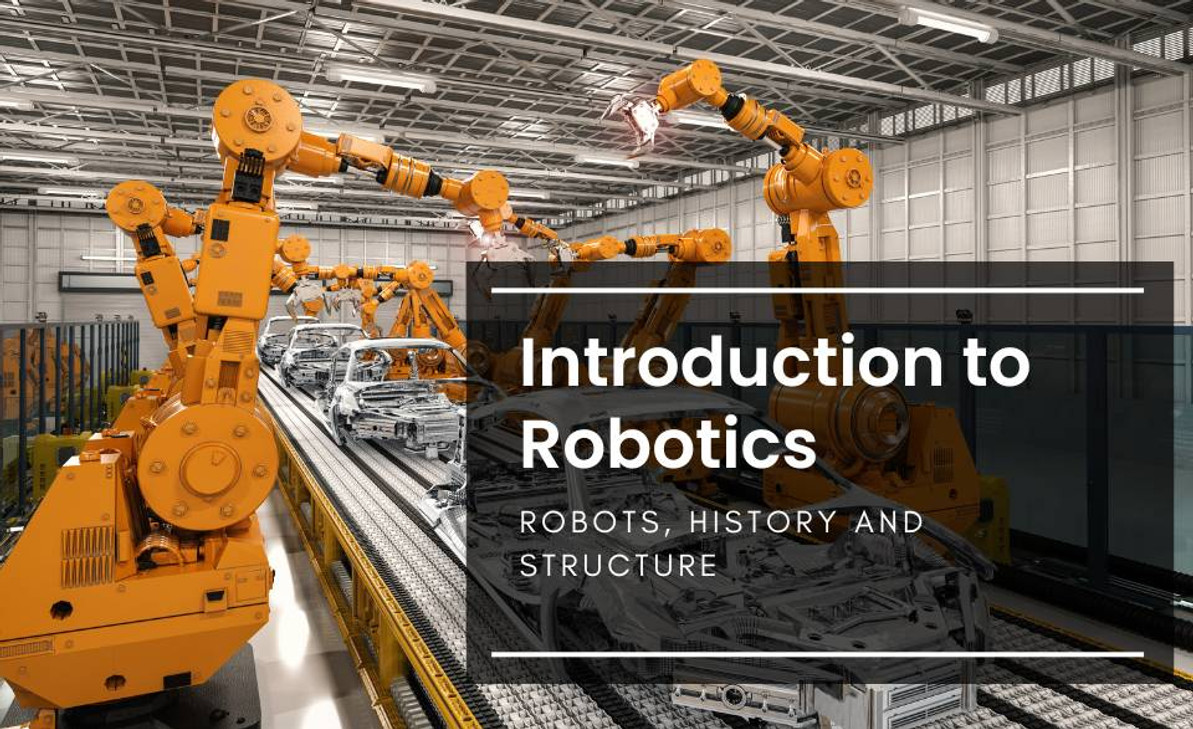Introduction to Robotics: Robots, History and Structure
From the assembly lines of factories to the depths of the ocean, from the familiar confines of our homes to the vast expanse of space, robots have become an integral part of our world. These mechanical marvels, imbued with artificial intelligence and programmed with intricate instructions, are transforming industries, shaping our lives, and pushing the boundaries of human ingenuity.
The word "robot" conjures images of sleek, humanoid figures capable of performing complex tasks with superhuman precision. However, the concept of robotics encompasses a vast spectrum of machines, from the unassuming vacuum cleaner that diligently cleans our floors to the intricate surgical robots that perform delicate procedures with unwavering precision.
From history's gears to future's grasp, explore the world of robots, then build your own reality with our Robot Machine products !
Previewing Robotics: Insights Await in this Article!
In this comprehensive guide to robotics, we will unravel the essence of these mechanical marvels, probing into their significance and understanding why they stand as the cornerstone of modern innovation. From their history in Greece, China and Muslim world to their profound impact on industries, homes, and even our daily lives in recent decades, robots have emerged as the embodiment of human ingenuity and technological prowess.
Within the vast universe of robotics, we’ll unravel the intricacies of their core components: sensors that perceive the world around them, actuators that bring their actions to life, and controllers that serve as their guiding intelligence. These elements form the backbone of robotic functionality, steering their capabilities and enabling them to interact with the environment.
In the forthcoming sections, we’ll delve deeper into these fundamental components, unveiling their roles and significance in shaping the capabilities of robots. We'll explore how sensors act as their senses, perceiving information from the surroundings, how actuators translate instructions into physical movements, and how controllers serve as their cognitive center, orchestrating their actions with precision and finesse.
History Of Robotics
Early Origins of Robotics
Exploring the origins of robotics unveils a rich history rooted in ancient civilizations' ingenuity and philosophical musings. From the fascinating Robots of ancient Greece and China to the visionary concepts of Da Vinci and Muslim inventors and philosophers, these early innovations laid the groundwork for the captivating evolution of robotics.
Ancient Greece
The roots of robotics can be traced back to ancient civilizations, particularly in the remarkable ingenuity displayed by the Greeks. Inventors and artisans, such as Hero of Alexandria in the 1st century AD, crafted intricate mechanical devices known as automata. Hero's works included pneumatic, hydraulic, and mechanical systems that simulated human and animal movements. His "theatre" experiments showcased these devices, captivating audiences with their lifelike motions, powered by air, water, or simple mechanisms.
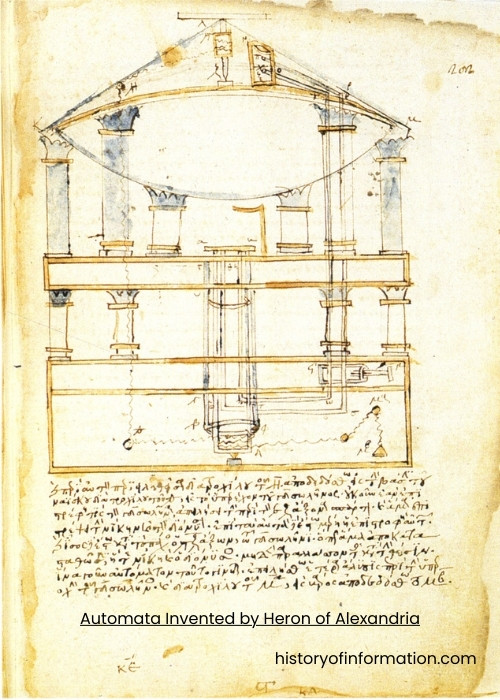
China
Concurrently, in ancient China, inventors were also pioneering similar innovations. Zhang Heng, a polymath from the Eastern Han Dynasty, constructed a seismoscope around 132 AD, considered one of the earliest known mechanical devices. This seismoscope detected earthquakes and had a ball-drop mechanism indicating the direction of the seismic activity. These early examples highlighted the beginnings of mechanization and automated functionalities.
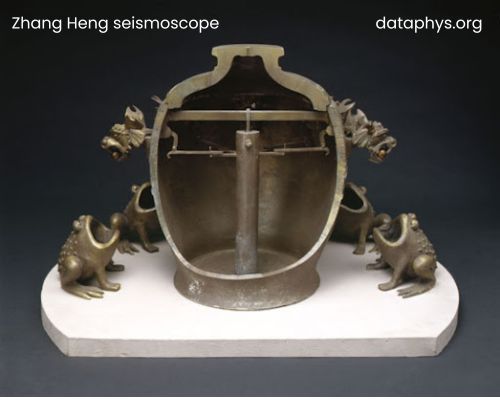
Al-Jazari and Islamic Innovation
Moving into the medieval period, significant advancements emerged in the Islamic world. Al-Jazari, a polymath and engineer from the 12th century, designed intricate automated devices. His notable work, "The Book of Knowledge of Ingenious Mechanical Devices," detailed numerous automated mechanisms, including humanoid robots serving drinks, musical automatons, and programmable robots driven by water clocks.
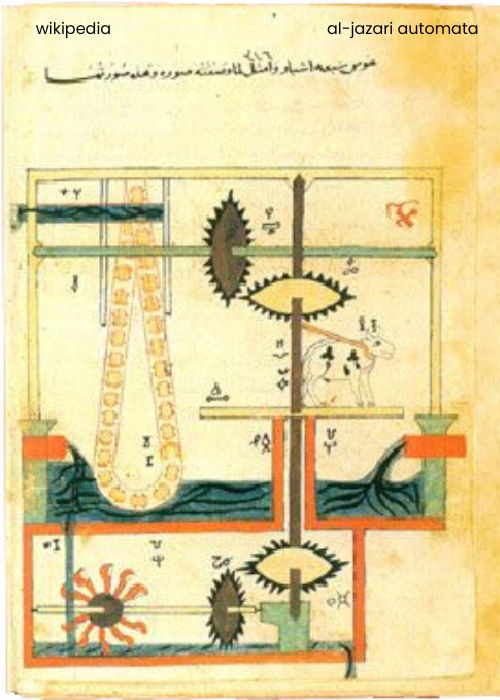
Philosophical Visions
Beyond practical inventions, early philosophers like Leonardo da Vinci conceptualized mechanical humanoid figures, revealing visionary ideas that foreshadowed the development of robotics. Da Vinci's sketches of the mechanical knight and anatomical drawings of humanoid machines illustrated his fascination with replicating human motion and functionality through machines, although many of these designs remained unrealized during his time.
The contributions from ancient inventors, artisans, and philosophical thinkers laid the foundation for the evolution of robotics, demonstrating an early fascination with creating automated and lifelike mechanisms that would eventually pave the way for the modern robotics revolution.
Pre-20th Century Advancements
Exploring the pre-20th century advancements unveils a pivotal era shaped by the Industrial Revolution's mechanization and the emergence of ingenious mechanical marvels. From the transformative impact of automated processes to the mesmerizing creations of inventors like Vaucanson and Kempelen, this period set the stage for the integration of automation into industries and the pursuit of lifelike automatons.
Transition to Mechanization
The Industrial Revolution, spanning the late 18th to mid-19th centuries, brought about a transformative shift from manual labor to mechanization. Innovations in textile manufacturing, steam power, and machine tools spurred the development of automated processes. Pioneering inventions, such as the spinning jenny by James Hargreaves and the power loom by Edmund Cartwright, mechanized textile production, significantly increasing efficiency and output.
Impact on Labor and Automation
This era marked a fundamental change in labor practices as machines began to replace manual work, leading to increased productivity but also raising concerns about job displacement. The adoption of assembly lines and mechanized production methods, notably exemplified by the innovations of Henry Ford in the early 20th century, revolutionized manufacturing and laid the groundwork for modern automation principles.
Jacques de Vaucanson's robot
During the 18th century, Jacques de Vaucanson, a French inventor, created a remarkable robotic form showcasing sophisticated mechanical movements. His famous creations included a mechanical duck capable of eating and digesting food, demonstrating an early form of programmable automaton, driven by a complex system of gears and cams.
The Turk and Other Automatons
Additionally, the chess-playing automaton known as "The Turk," created by Wolfgang von Kempelen in the late 18th century, captivated audiences across Europe and the United States. While later revealed to have a human operator hidden inside, The Turk symbolized the fascination with automatons and their ability to mimic human actions, inspiring future generations in the pursuit of creating intelligent machines.
The pre-20th century period witnessed a profound transformation in manufacturing techniques, driven by the Industrial Revolution's mechanization and the proliferation of ingenious mechanical devices and robots. These advancements laid the groundwork for the integration of automation into various industries and the ongoing quest to create more sophisticated and intelligent machines.
20th Century: Emergence and Development
Traversing the 20th century reveals a transformative era for robotics, characterized by groundbreaking experiments, the influence of imaginative science fiction, wartime innovation, and pivotal milestones that birthed modern robotics. From early visionary inventions to the integration of automated systems, this period laid the foundation for the technological landscape we navigate today.
Tesla's Remote-Controlled Boat
In the early 20th century, inventors like Nikola Tesla made strides in remote control technology. Tesla's demonstration of a remotely controlled boat in 1898 showcased the potential for machines to operate autonomously, laying the groundwork for future robotic advancements.
Sci-Fi Visionaries
Science fiction literature, notably authors like Isaac Asimov with his "Three Laws of Robotics" and Karel Čapek coining the term 'robot' in his play "R.U.R. (Rossum's Universal Robots)," ignited public imagination about the possibilities and ethical considerations surrounding intelligent machines. These narratives influenced societal perceptions and discussions about robotics' potential and ethical dilemmas.
Technological Innovations during the War
World War II became a catalyst for technological advancements. Countries involved in the conflict invested heavily in developing automated and remote-controlled devices for military applications. This period saw the emergence of unmanned aerial vehicles (UAVs) and remote-controlled tanks, laying the groundwork for future advancements in autonomous systems.
Birth of Modern Robotics and Key Milestones (1950s - 1970s)
In 1961, George Devol and Joseph Engelberger introduced the first industrial robot called the Unimate. Used initially in General Motors' assembly lines, the Unimate performed repetitive tasks, marking the birth of modern robotics in industrial settings.
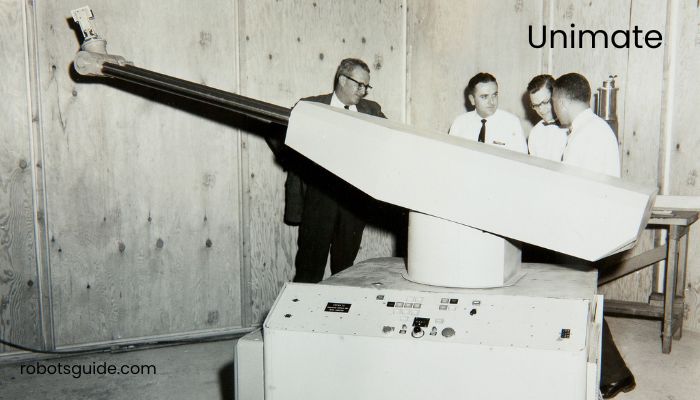
Concurrently, the 1950s witnessed significant strides in artificial intelligence (AI). Robotics and AI intersected in the development of Shakey, a mobile robot developed at Stanford Research Institute in the late 1960s. Shakey's ability to perceive its surroundings and make decisions marked a key milestone in autonomous robotics.
The Apollo moon missions in the late 1960s and early 1970s also pushed the boundaries of robotics. The deployment of robotic arms and remote-controlled devices on the lunar surface showcased the capabilities of robots in space exploration.
The 20th century was marked by early experiments, profound influences from science fiction, wartime technological advancements, and pivotal milestones in robotics that laid the groundwork for the integration of automated systems into various sectors, shaping the modern era of robotics and artificial intelligence.
From 1970 to the present day, there have been significant improvements in the world of robotics, and robots are finding their place in our lives day by day. I don't want to spoil the details of the changes and improvements since we will have another blog post specifically for the 1970-2024 era.
Robotic components
Robotic components like sensors, actuators, and controllers work together seamlessly. Sensors gather environmental data, actuators act upon this information, and controllers make decisions based on the data, directing the actuators. This collaboration enables robots to sense, process, and respond autonomously or under human guidance, transforming various industries and tasks.
The Eyes and Ears of Robots
Sensors serve as the sensory organs of robots, enabling them to gather information about their surroundings. They act as the eyes, gathering visual data through cameras and image sensors. These sensors allow robots to perceive the environment through various modalities such as vision, touch, and proximity. This sensory data provides robots with insights into their surroundings, enabling them to navigate, interact, and respond to their environment with remarkable precision and adaptability.
Vision sensors play a crucial role in enhancing robots' perception and decision-making capabilities. These sensors, often integrated with cameras, capture images of the robot's surroundings, providing valuable information about objects, distances, and the overall environment. They enable robots to navigate in clutter, perform object identification, and even recognize faces.
The advanced processing capabilities of vision sensors go beyond mere image capture. They delve into the intricacies of the visual world, extracting meaningful information that empowers robots to make informed decisions. This enhanced perception allows robots to adapt to their surroundings, interact with objects, and perform tasks with greater precision and autonomy.
Position sensors are the indispensable navigational aids of the robotics world, providing robots with accurate information about their position in space. These sensors, essential for tasks ranging from industrial automation to medical applications, enable robots to navigate with precision, perform delicate operations, and maintain a safe distance from obstacles.
Position sensors are the cornerstone of robotic navigation, enabling robots to interact with their surroundings with unparalleled precision. Their role extends beyond mere positioning; they empower robots to perform complex tasks, adapt to diverse environments, and revolutionize various industries. As robotics technology continues to advance, position sensors will play an even greater role in shaping the future of automation and interaction between humans and machines.
Touch sensors, the embodiment of robotic touch, enable robots to perceive their surroundings through physical contact. These sensors, like the sensitive fingertips of humans, gather information about objects, surfaces, and forces, enhancing the robot's ability to interact with the physical world.
The Muscles of Robots
Actuators are the workhorses of robots, translating sensor data into actions. They function as the muscles, enabling robots to move, manipulate objects, and perform tasks. From industrial robots that weld car parts to humanoid robots that assist patients, actuators provide robots with the power to interact with the physical world.
Electric Motors are the most common type of actuator, converting electrical energy into rotational motion. They power the servo motors that drive robotic joints, allowing precise control over movement and force.
Electric motors play a crucial role in robotics, enabling robots to move, manipulate objects, and perform complex tasks with precision and adaptability. The development of advanced electric motors has been a driving force behind advancements in robotics technology, and as these motors continue to evolve, robots will become even more capable and versatile.
Pneumatic Actuators use compressed air to generate linear motion, often used for tasks that require high force or rapid switching. They are commonly employed in robotic grippers and robotic arms.
Pneumatic actuators are well-suited for a wide range of robotic applications due to their simplicity, reliability, and high force-to-weight ratio. They are particularly useful for tasks that require high speed or where electric motors are not practical, such as in hazardous environments or where there is a risk of electrical shock.
Hydraulic Actuators utilize hydraulic fluid to generate linear motion, enabling robots to exert even greater forces. They are often used in applications that require heavy lifting or significant power.
The Brains Behind the Action
At the helm of the intricate robot system sits the controller, the central processing unit that orchestrates the interplay between sensors and actuators. It acts as the brain, interpreting sensor data, making decisions, and issuing commands to actuators. The controller's intelligence determines a robot's ability to perform complex tasks, navigate autonomously, and respond to unexpected situations.
The seamless collaboration of sensors, actuators, and controllers empowers robots with remarkable capabilities, enabling them to revolutionize industries and shape the future of work and society. From performing delicate surgery to inspecting hazardous environments, robots are poised to transform our world, leaving an indelible mark on the technological landscape.
Conclusion
Robotics embodies the culmination of human innovation, from ancient automata to today's intelligent machines. Through sensors, actuators, and controllers, robots mirror human senses, muscles, and brains, revolutionizing industries and expanding our capabilities.
This journey, marked by historical milestones and technological leaps, showcases our relentless pursuit of progress. Robotics isn't just about machines; it's about collaboration, reshaping our world, and inspiring a future where humans and robots work hand in hand to create marvels yet unseen.
Let's get you on the right track! Read more here about Robots.
Recent Posts
-
Booster Pump Troubleshooting and Maintenance: How to Fix and Prevent Common Issues
1. Introduction Imagine turning on your faucet only to be greeted with a weak trickle of water when …22nd Apr 2025 -
Energy-Efficient Booster Pumps: Selection and Tips for Maximizing Performance
1. Introduction Imagine never having to deal with fluctuating water pressure, noisy pumps, or skyroc …19th Apr 2025 -
Booster Pumps for Sustainable Water Systems: Irrigation and Rainwater Harvesting Solutions
1. Introduction Water scarcity is no longer a distant threat—it’s a reality affecti …16th Apr 2025

